On View
‘I Didn’t Want Her to Carry the Weight’: How Wangechi Mutu’s African-Inspired Caryatids on the Met’s Facade Break Free of Tradition
The sculptural niches on the Met's facade had sat empty since 1902.
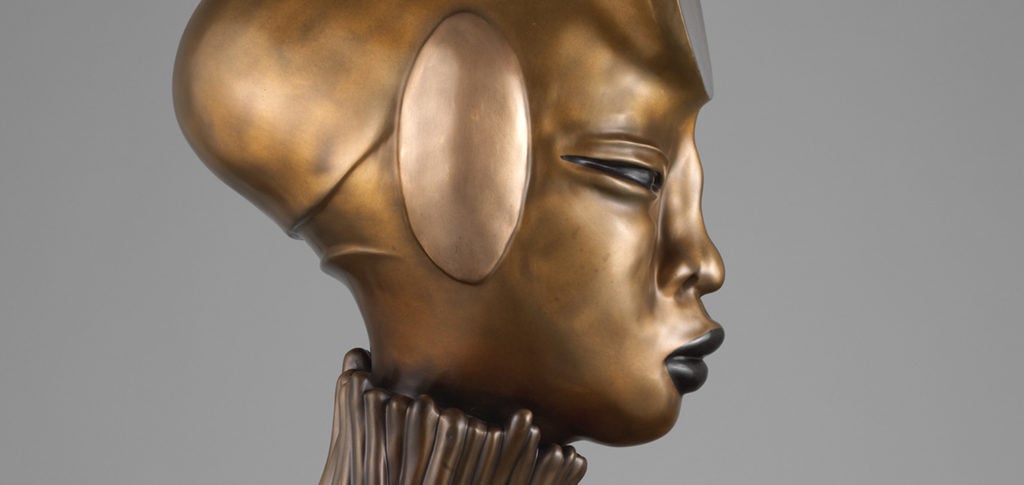
The sculptural niches on the Met's facade had sat empty since 1902.

Sarah Cascone

When the architect Richard Morris Hunt designed the regal Beaux-Arts facade of New York’s Metropolitan Museum of Art, he planned to install between each pair of Grecian-style pillars a quartet of sculptures by the Viennese Neoclassical artist Karl Bitter. But the museum ran out of funding and the niches on its facade remained vacant—until now.
Earlier this month, the museum unveiled its first-ever commission for the facade, a subtle yet eye-popping series of sculptures by the 47-year-old Kenyan-born artist Wangechi Mutu. Titled “The NewOnes, will free Us,” the exhibition features four works—The Seated I, II, III, and IV—each enlivening the dormant spaces for the first time since the building was completed in 1902.
The artist is acutely aware that it is only recently possible that a commission like this would have been open to her. “Richard Morris Hunt wasn’t creating the niches for my four stately seated figures and their reflective faces,” Mutu said. “The Met Museum, the facade and entryway in particular, were designed before women, and specifically black women, in the United States had rights as full human beings.”
Mutu was approached about the commission just nine months in advance, as part of director Max Hollein’s “efforts to place contemporary art throughout the building, to break down the barriers between departments, between historical periods, between continents,” according to Kelly Baum, a contemporary art curator at the Met. (A new series of new contemporary art commissions include a recent immersive video installation from Ragnar Kjartansson, and an upcoming painting installation by Kent Monkman.)
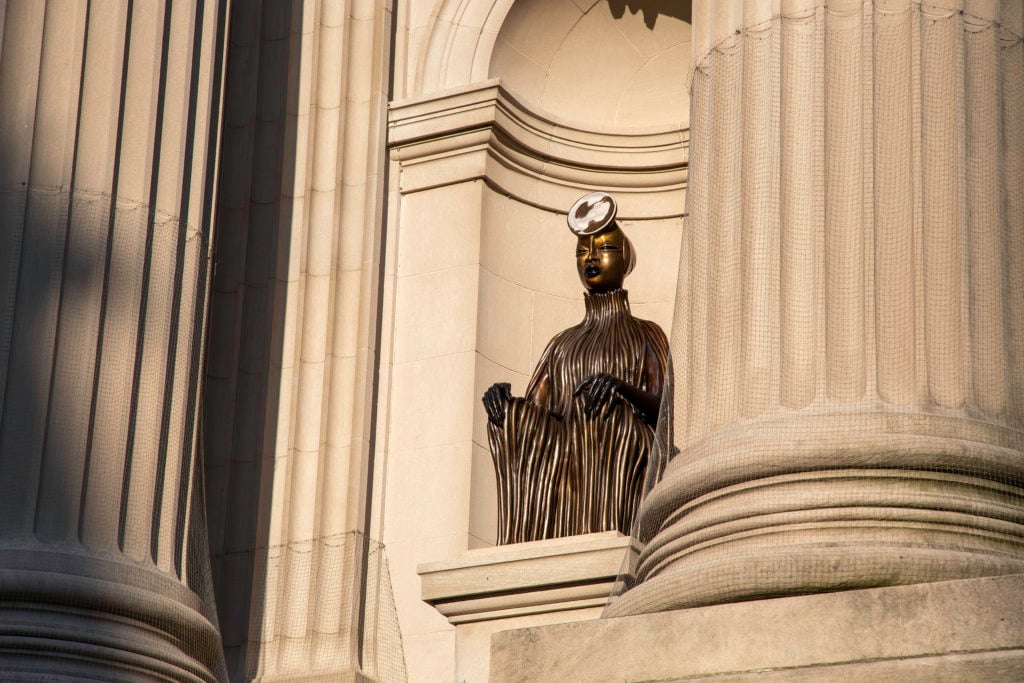
Wangechi Mutu, installation view of The Seated II, from “The NewOnes, will free Us” (2019). Photo courtesy of the artist; Gladstone Gallery, New York and Brussels; and the Metropolitan Museum of Art, New York.
Mutu decided it was important to her to blend Western and African art traditions, and to depict strong black female figures. She settled on a contemporary take on the traditional caryatid, which are almost always sculpted female forms that double as architectural elements, typically supporting a roof or balcony.
“Caryatids, throughout history, have carried these buildings to express the might and the wealth of a particular place,” Mutu told artnet News in an email. “In Greek architecture, you see these women in their beautiful robes, and then in African sculpture across the continent you see these women either kneeling or sitting, sometimes holding a child, as well as holding up the seat of the king.”
In contrast, Mutu’s statues are freestanding. “I wanted to keep the DNA of the woman in an active pose, but I didn’t want her to carry the weight of something or someone else,” she said.
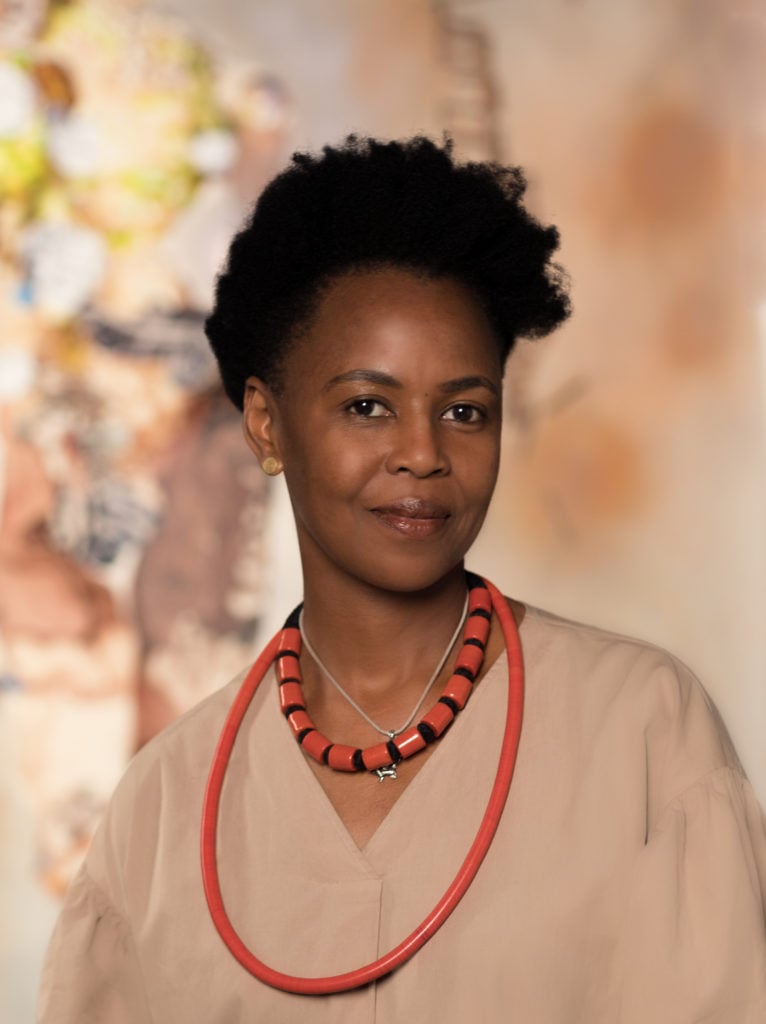
Wangechi Mutu (2019). Photo by Eileen Travell, courtesy of the Metropolitan Museum of Art.
“Wangechi likes to say that women’s bodies, especially in Africa, are meant to carry culture,” said Baum. “They’re like living museums—the art history of any particular group is actually borne by the bodies of women.”
The set of four bronze humanoid female figures, larger than life at seven feet tall, now stand sentry over the museum. Their otherworldly forms sheathed in coils, they seem as though beamed down from an alien planet. Sunlight reflects off large mirrored discs placed prominently on the statues’ faces, referencing traditional tribal jewelry and lip plates worn in some parts of Africa.
“Wangechi’s imposing figures carry the weight and the roots of tradition, while pointing also to the future, asserting a new authority, and becoming the new ambassadors of the Met, welcoming our visitors, and welcoming also a new perspective,” said Hollein at the exhibition’s press preview. “They have the power and the presence to make us look at the institution, and at cultural narratives that have been portrayed, in a new expanded and in an expanded way.”
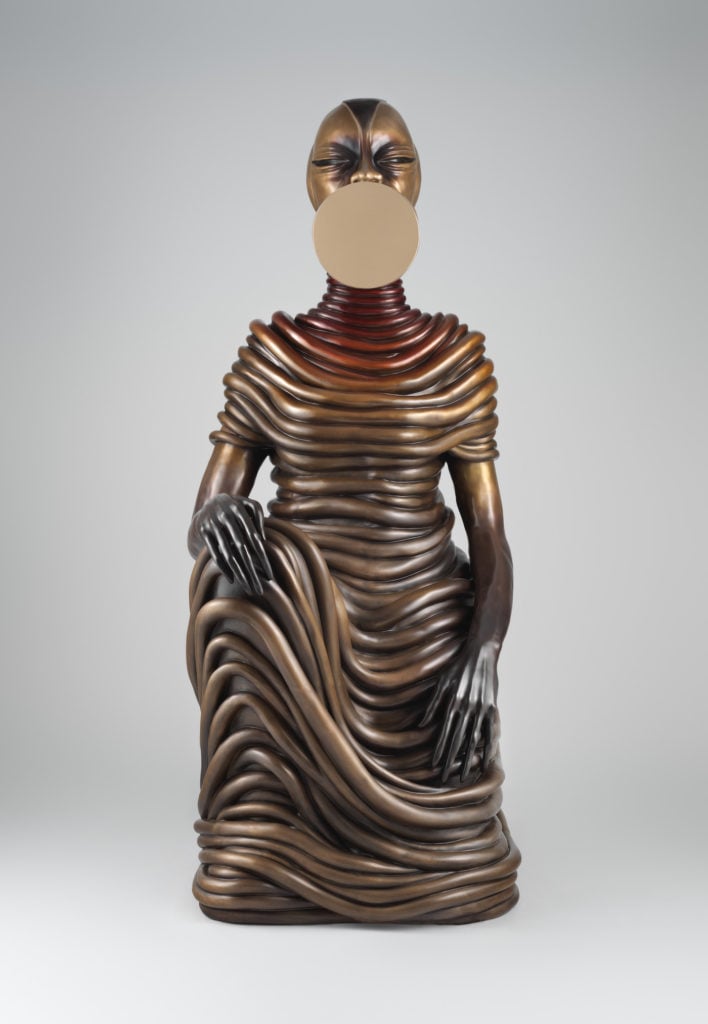
Wangechi Mutu, The Seated I, from “The NewOnes, will free Us” (2019). Photo courtesy of the artist; Gladstone Gallery, New York and Brussels; and the Metropolitan Museum of Art, New York.
Installing the massive works, a whopping 840 pounds each, was no easy undertaking. “It involved closing lanes of traffic and hauling in an enormous crane,” Baum said. But with that daunting task complete, “they look like they have always been here.”
Mutu began visiting the Met as an art student newly arrived to New York in the 1990s. “I love the span of histories the museum captures. It is so vast and yet not intimidating, majestic, but still everyone’s ‘art class,'” she said.
“There are images I never get tired of looking at among the Ancient Egyptian scrolls,” she added, naming “the hybrid human-animal gods, the seated tiered royal families, the high-ranking god-queens.”
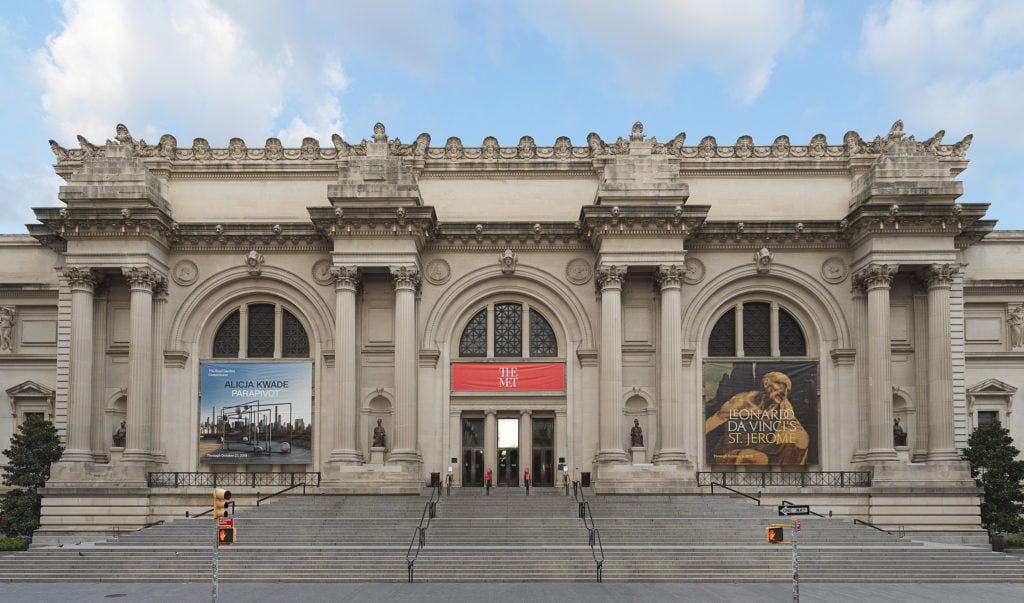
“Wangechi Mutu: The NewOnes, will free Us” (2019), installation view. Photo courtesy of the artist; Gladstone Gallery, New York and Brussels; and the Metropolitan Museum of Art, New York.
In preparation for the project, Mutu looked especially to the museum’s African and Oceanic collections for inspiration. “Combing through ritual objects in particular was essential and fascinating,” Mutu recalled. Two works in particular stood out to her: a Yoruba caryatid, featuring a standing woman supporting a man on horseback atop her head, and a Congolese “prestige stool,” a female figure kneeling, her legs suggestively parted.
Ultimately, Wangechi hopes her work will open visitors’ eyes to a more global art history. “Museums of this scale and scope are impressively capable of evolving and admitting their blind spots or transgressions,” she said. “It’s a refreshing and very admirable aspect about this commission: that a museum is its people and is a living, thinking, moving brain—or else it atrophies and stagnates.”
See more photos of the works below.
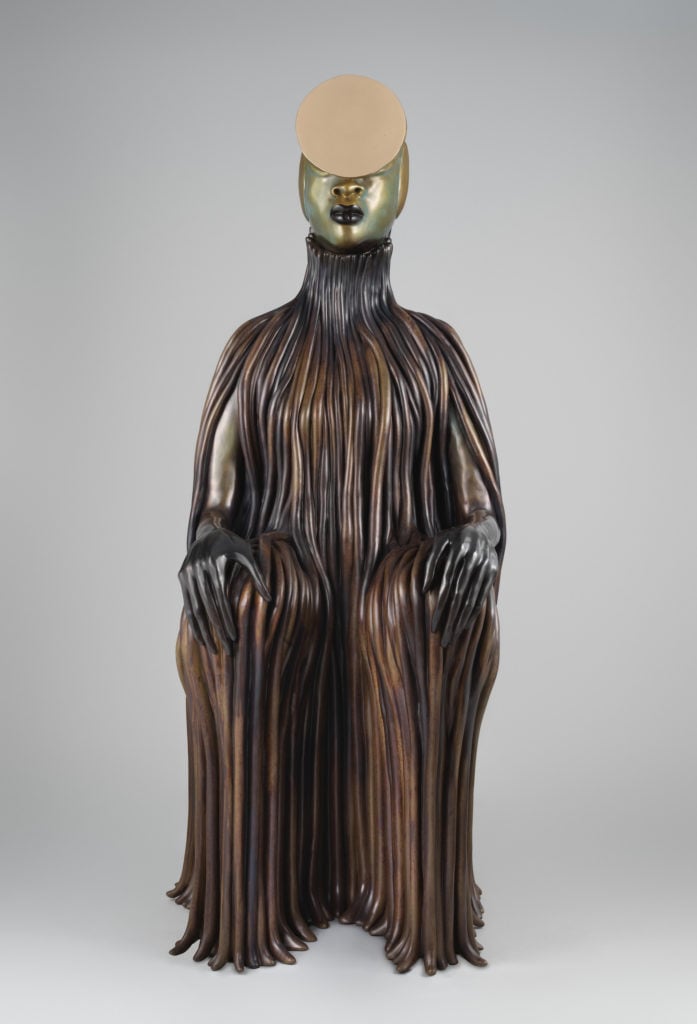
Wangechi Mutu, The Seated IV, from “The NewOnes, will free Us” (2019). Photo courtesy of the artist; Gladstone Gallery, New York and Brussels; and the Metropolitan Museum of Art, New York.
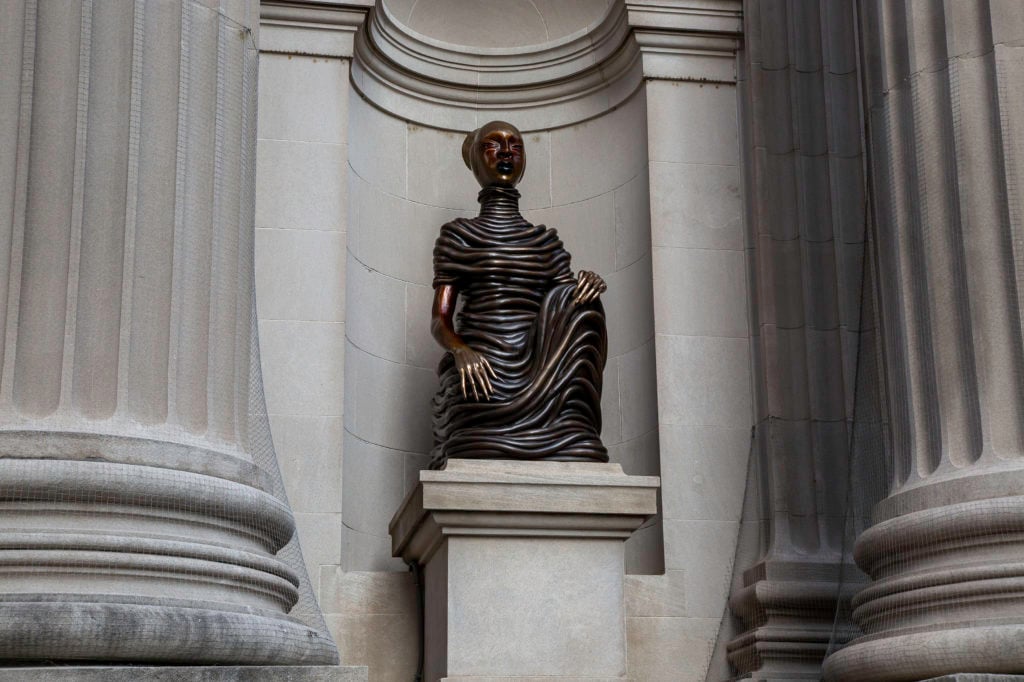
Wangechi Mutu, The Seated III, from “The NewOnes, will free Us” (2019), installation view. Photo courtesy of the artist; Gladstone Gallery, New York and Brussels; and the Metropolitan Museum of Art, New York.
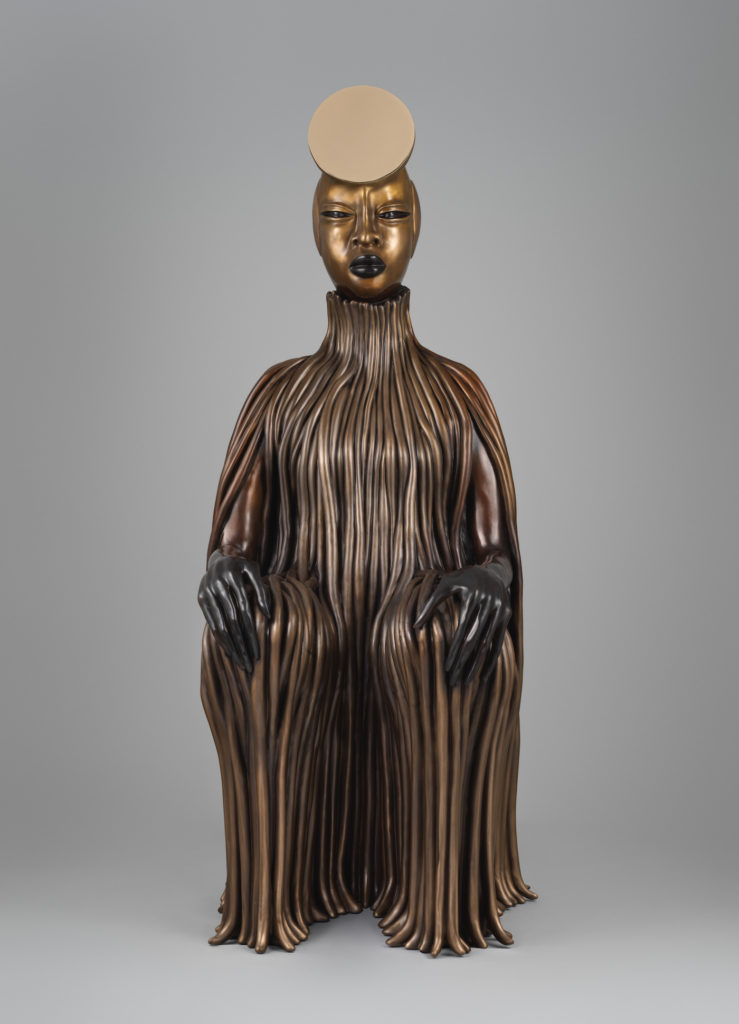
Wangechi Mutu, The Seated II, from “The NewOnes, will free Us” (2019). Photo courtesy of the artist; Gladstone Gallery, New York and Brussels; and the Metropolitan Museum of Art, New York.
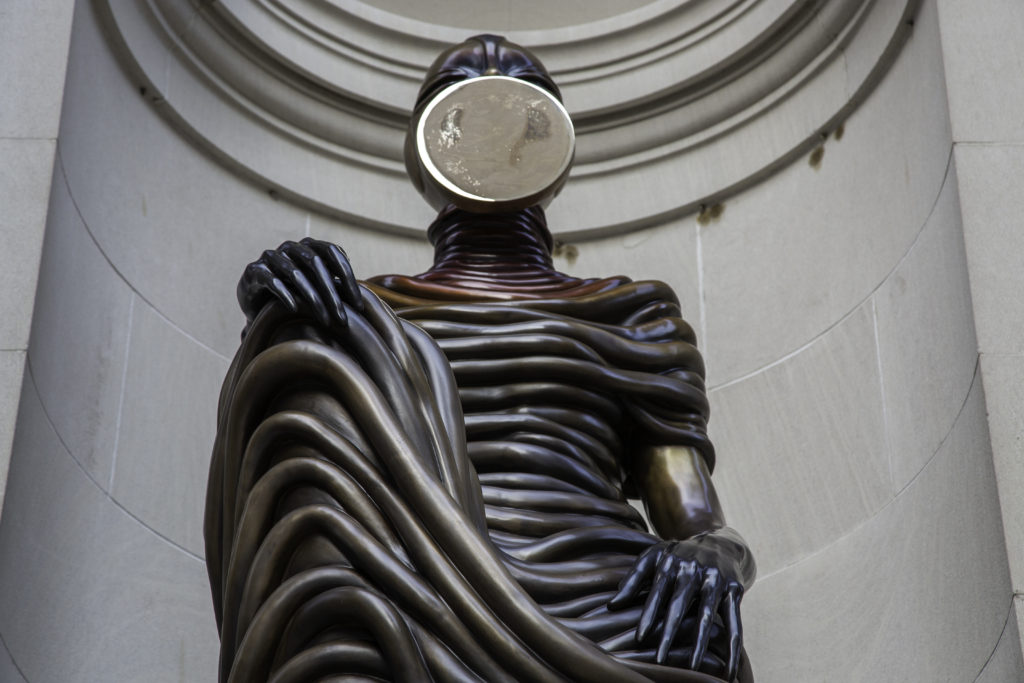
Wangechi Mutu, The Seated I, from “The NewOnes, will free Us” (2019), installation view. Photo courtesy of the artist; Gladstone Gallery, New York and Brussels; and the Metropolitan Museum of Art, New York.
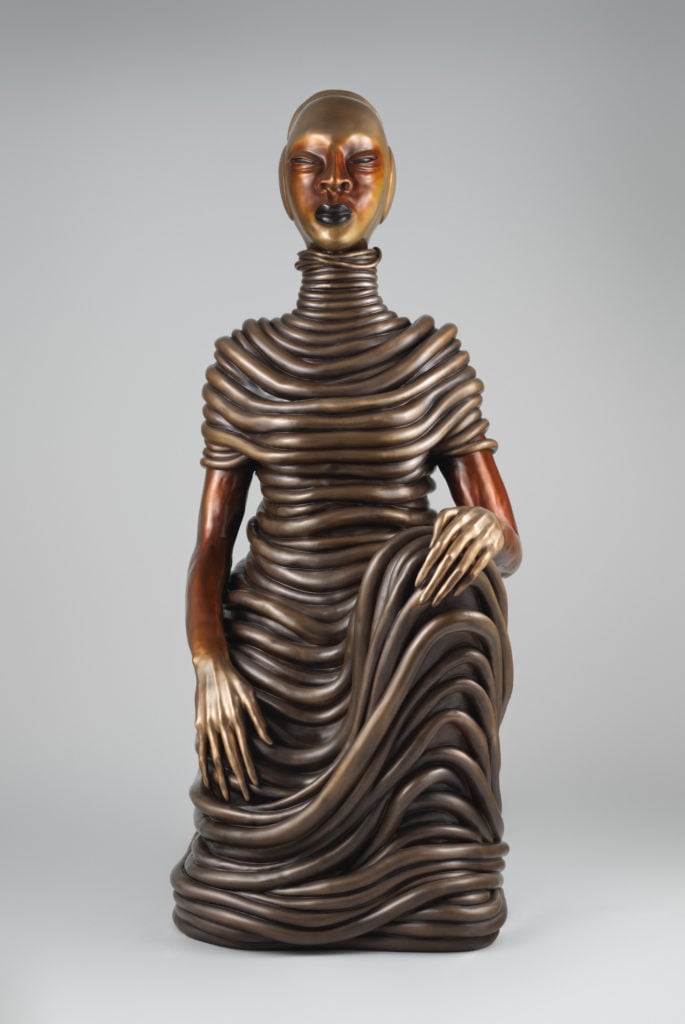
Wangechi Mutu, The Seated III, from “The NewOnes, will free Us” (2019). Photo courtesy of the artist; Gladstone Gallery, New York and Brussels; and the Metropolitan Museum of Art, New York.
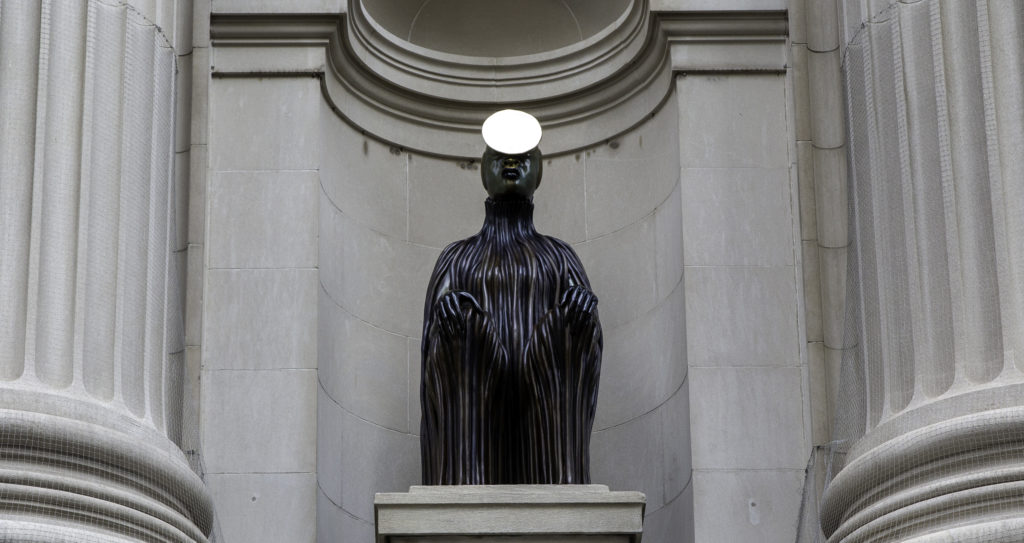
Wangechi Mutu, The Seated IV, from “The NewOnes, will free Us” (2019), installation view. Photo courtesy of the artist; Gladstone Gallery, New York and Brussels; and the Metropolitan Museum of Art, New York.
“Wangechi Mutu: The NewOnes, will free Us” is on view at the Metropolitan Museum of Art, 1000 Fifth Avenue, New York, New York, September 9–January 12, 2020.